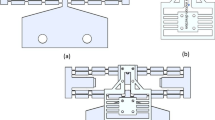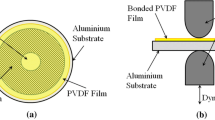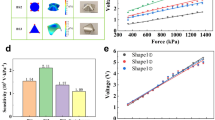Abstract
Packaged piezoelectric ceramic actuators (PPCAs) and compliant mechanisms are attractive for nanopositioning and nanomanipulation due to their ultra-high precision. The way to create and keep a proper and steady connection between both ends of the PPCA and the compliant mechanism is an essential step to achieve such a high accuracy. The connection status affects the initial position of the terminal moving plate, the positioning accuracy and the dynamic performance of the nanopositioning platform, especially during a long-time or high-frequency positioning procedure. This paper presents a novel external preload mechanism and tests it in a 1-degree of freedom (1-DOF) compliant nanopositioning platform. The 1-DOF platform utilizes a parallelogram guiding mechanism and a parallelogram load mechanism to provide a more accurate actual input displacement and output displacement. The simulation results verify the proposed stiffness model and dynamic model of the platform. The values of the preload displacement, actual input displacement and output displacement can be measured by three capacitive sensors during the whole positioning procedure. The test results show the preload characteristics vary with different types or control modes of the PPCA. Some fitting formulas are derived to describe the preload displacement, actual input displacement and output displacement using the nominal elongation signal of the PPCA. With the identification of the preload characteristics, the actual and comprehensive output characteristics of the PPCA can be obtained by the strain gauge sensor (SGS) embedded in the PPCA.
Similar content being viewed by others
References
Zhang Y L, Zhang Y, Ru C, et al. A load-lock-compatible nanomanipulation system for scanning electron microscope. IEEE/ASME Transactions on Mechatronics, 2013, 18(1): 230–237
Tang H, Li Y. Design, analysis, and test of a novel 2-DOF nanopositioning system driven by dual mode. IEEE Transactions on Robotics, 2013, 29(3): 650–620
Yong Y K, Moheimani S O R, Kenton B J, et al. Invited review article: High-speed flexure-guided nanopositioning: Mechanical design and control issues. Review of Scientific Instruments, 2012, 83(12): 121101–121122
Espinosa H D, Zhu Y, Moldovan N. Design and operation of a mems-based material testing system for nanomechanical characterization. Journal of Microelectromechanical Systems, 2007, 16(5): 1219–1231
Fukuda T, Nakajima M, Liu P, et al. Nanofabrication, nanoinstrumentation and nanoassembly by nanorobotic manipulation. International Journal of Robotics Research, 2009, 28(4): 537–547
Wang H, Zhang X. Input coupling analysis and optimal design of a 3-DOF compliant micro-positioning stage. Mechanism and Machine Theory, 2008, 43(4): 400–410
Kim H, Gweon D G. Development of a compact and long range xyθz nanopositioningstage. Review of Scientific Instruments, 2012, 83(8): 085102–085108
Culpepper M L, Anderson G. Design of a low-cost nano-manipulator which utilizes a monolithic, spatial compliant mechanism. Precision Engineering, 2004, 28(4): 469–482
Li Y, Xu Q. A totally decoupled piezo-driven XYZ flexure parallel micropositioning stage for micro/nanomanipulation. IEEE Transactions on Automation Science and Engineering, 2011, 8(2): 265–279
Wang R, Zhang X. Design & test of a novel planar 3-DOF precision positioning platform with a large magnification. In: Proceedings of 2014 International Conference on Manipulation, Manufacturing and Measurement on the Nanoscale (3M-NANO). Taipei: IEEE, 2014, 288–295
Howell L L. Compliant Mechanisms. New York: Wiley-Inter-Science, 2001
Lobontiu N. Compliant Mechanisms: Design of Flexure Hinges. Boca Raton: CRC Press, 2003
Yong Y K, Lu T F, Handley D C. Review of circular flexure hinge design equations and derivation of empirical formulations. Precision Engineering, 2008, 32(2): 63–70
Lin R, Zhang X, Long X, et al. Hybrid flexure hinges. Review of Scientific Instruments, 2013, 84(8): 085004–085014
Adriaens H J M T S, de Koning W, Banning R. Modeling piezoelectric actuators. IEEE/ASME Transactions on Mechatronics, 2000, 5(4): 331–341
Ge P, Jouaneh M. Tracking control of a piezoceramic actuator. IEEE Transactions on Control Systems Technology, 1996, 4(3): 209–216
Baxter L K. Capacitive Sensors: Design and Applications. Piscataway: IEEE Press, 1997
Fleming A J. A review of nanometer resolution position sensors: Operation and performance. Sensors and Actuators A: Physical, 2013, 190: 106–126
Tian Y, Shirinzadeh B, Zhang D. Design and dynamics of a 3-DOF flexure-based parallel mechanism for micro/nano manipulation. Microelectronic Engineering, 2010, 87(2): 230–241
Yong Y K, Aphale S S, Moheimani S O R. Design, identification, and control of a flexure-based XY stage for fast nanoscale positioning. IEEE Transactions on Nanotechnology, 2009, 8(1): 46–54
Leang K K, Fleming A J. High-speed serial-kinematic SPM scanner: Design and drive considerations. Asian Journal of Control, 2009, 11(2): 144–153
Zhang X, Wang R. China Patent, 2014103010471, 2014-06-27
Bathe K J, Wilson E L. Numerical Methods in Finite Element Analysis. Englewood Cliffs: Prentice-Hall, 1976
Author information
Authors and Affiliations
Corresponding author
Rights and permissions
About this article
Cite this article
Wang, R., Zhang, X. Preload characteristics identification of the piezoelectric-actuated 1-DOF compliant nanopositioning platform. Front. Mech. Eng. 10, 20–36 (2015). https://doi.org/10.1007/s11465-015-0328-z
Received:
Accepted:
Published:
Issue Date:
DOI: https://doi.org/10.1007/s11465-015-0328-z




